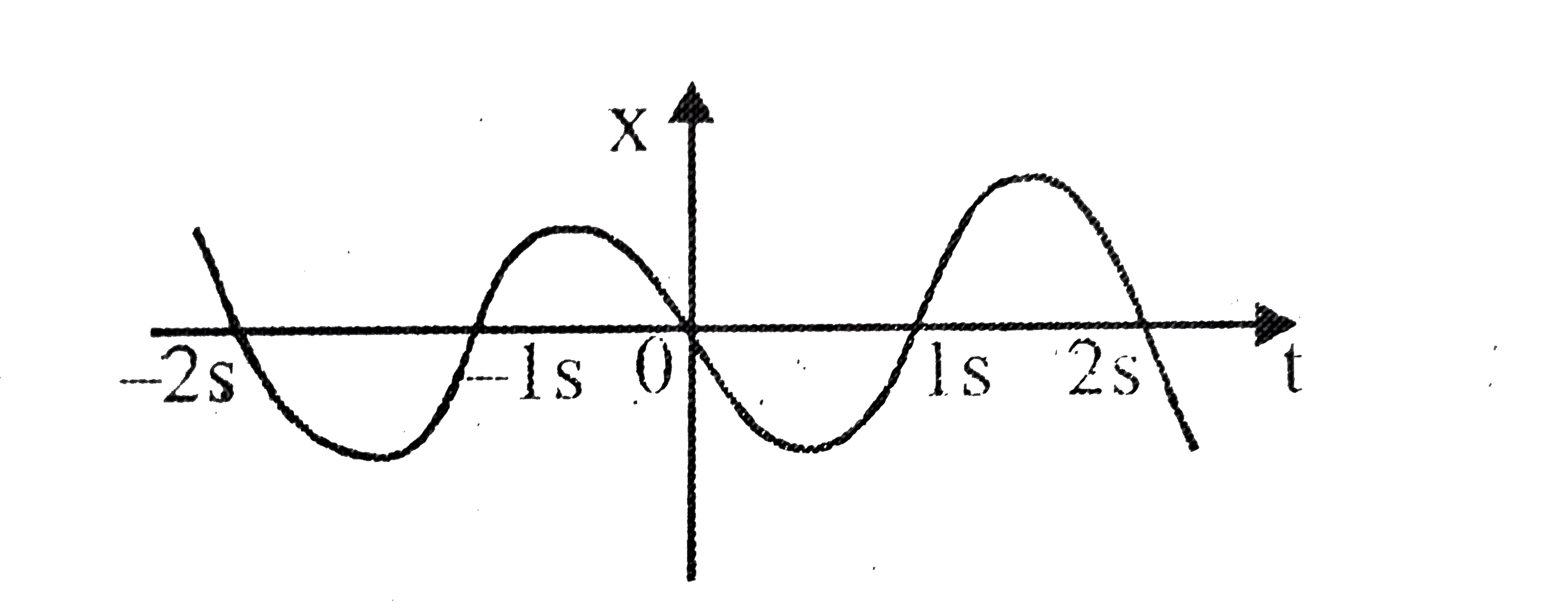The displacement x of a particle varies with time t as
x=4t2−15t+25
Find the position, velocity and acceleration of the particle at t=0. When will the velocity of the particle become zero? Can we call the motion of the particle as one with uniform acceleration ?
To solve the problem step by step, we will follow the given instructions to find the position, velocity, and acceleration of the particle at t=0, determine when the velocity becomes zero, and check if the motion has uniform acceleration.
Step 1: Find the position at t=0
The displacement of the particle is given by the equation:
x=4t2−15t+25
To find the position at t=0, substitute t=0 into the equation:
x=4(0)2−15(0)+25=25
Thus, the position at t=0 is x=25 meters.
Step 2: Find the velocity at t=0
Velocity is the rate of change of displacement with respect to time, which is the derivative of the displacement function:
v=dxdt=ddt(4t2−15t+25)
Calculating the derivative:
v=8t−15
Now, substitute t=0 into the velocity equation:
v=8(0)−15=−15m/s
Thus, the velocity at t=0 is v=−15m/s.
Step 3: Find the acceleration at t=0
Acceleration is the rate of change of velocity with respect to time, which is the derivative of the velocity function:
a=dvdt=ddt(8t−15)
Calculating the derivative:
a=8m/s2
Since acceleration is constant, the acceleration at t=0 is a=8m/s2.
Step 4: Determine when the velocity becomes zero
To find when the velocity is zero, set the velocity equation to zero:
8t−15=0
Solving for t:
8t=15⟹t=158seconds
Step 5: Check if the motion is uniform acceleration
Since the acceleration is constant (as we found a=8m/s2), we can conclude that the motion of the particle is indeed uniform acceleration.
Summary of Results:
- Position at t=0: x=25m
- Velocity at t=0: v=−15m/s
- Acceleration at t=0: a=8m/s2
- Time when velocity becomes zero: t=158s
- Motion is uniform acceleration: Yes
x=4t2−15t+25
To find the position at t=0, substitute t=0 into the equation:
x=4(0)2−15(0)+25=25
Thus, the position at t=0 is x=25 meters.
v=dxdt=ddt(4t2−15t+25)
Calculating the derivative:
v=8t−15
Now, substitute t=0 into the velocity equation:
v=8(0)−15=−15m/s
Thus, the velocity at t=0 is v=−15m/s.
a=dvdt=ddt(8t−15)
Calculating the derivative:
a=8m/s2
Since acceleration is constant, the acceleration at t=0 is a=8m/s2.
8t−15=0
Solving for t:
8t=15⟹t=158seconds
- Position at t=0: x=25m
- Velocity at t=0: v=−15m/s
- Acceleration at t=0: a=8m/s2
- Time when velocity becomes zero: t=158s
- Motion is uniform acceleration: Yes
Topper's Solved these Questions
- MOTION IN ONE DIMENSIONBOOK - SL ARORACHAPTER - MOTION IN ONE DIMENSIONEXERCISE - problem
19 Videos
- MOTION IN ONE DIMENSIONBOOK - SL ARORACHAPTER - MOTION IN ONE DIMENSIONEXERCISE - problems for self practice
66 Videos
- Motion in a PlaneBOOK - SL ARORACHAPTER - Motion in a PlaneEXERCISE - Excercise
397 Videos
- OSCILLATIONSBOOK - SL ARORACHAPTER - OSCILLATIONSEXERCISE - Exercise
233 Videos
Similar Questions
Knowledge Check
the angular velocity omega of a particle varies with time t as ω=5t2+25rads. the angular acceleration of the particle att=1s is
A10rads2B5rads2CZeroD3rads2The position x of a particle varies with time t as x=at2−b. For what value of t acceleration is zero?
A2a3bBa/bCa3bDnever
The displacement x of a particle varies as
√x=t−2
(i) What is the velocity and acceleration of the particle at t=0?
(ii) When will the velocity of the particle become zero?
(iii) What is the displacement of the particle when its velocity is zero?
(iv) Is the motion of the particle uniformly accelerated or not?
View SolutionThe position x of a particle varies with time t as x=At^(2)-Bt^(3) .the acceleration at time t of the particle will be equal to zero
View SolutionThe position x of a particle varies with time t as x=at^(2)-bt^(3) .The acceleration of the particle will be zero at time t equal to
View SolutionThe velocity time relation of a particle is given by v =(3t2−2t−1)m/s Calculate the position and acceleration of the particle when velocity of the particle is zero . Given the initial position of the particle is 5m .
View SolutionFigure gives the x-t plot of a particle is one dimensional motion. Give the signs of position, velocity and acceleration of the particle at t = 0.3s

View SolutionThe position "x" of a particle varies with time (t) as x=At^(2)-Bt^(3)" .the acceleration at time t of the particle will be equal to zero
View Solution
